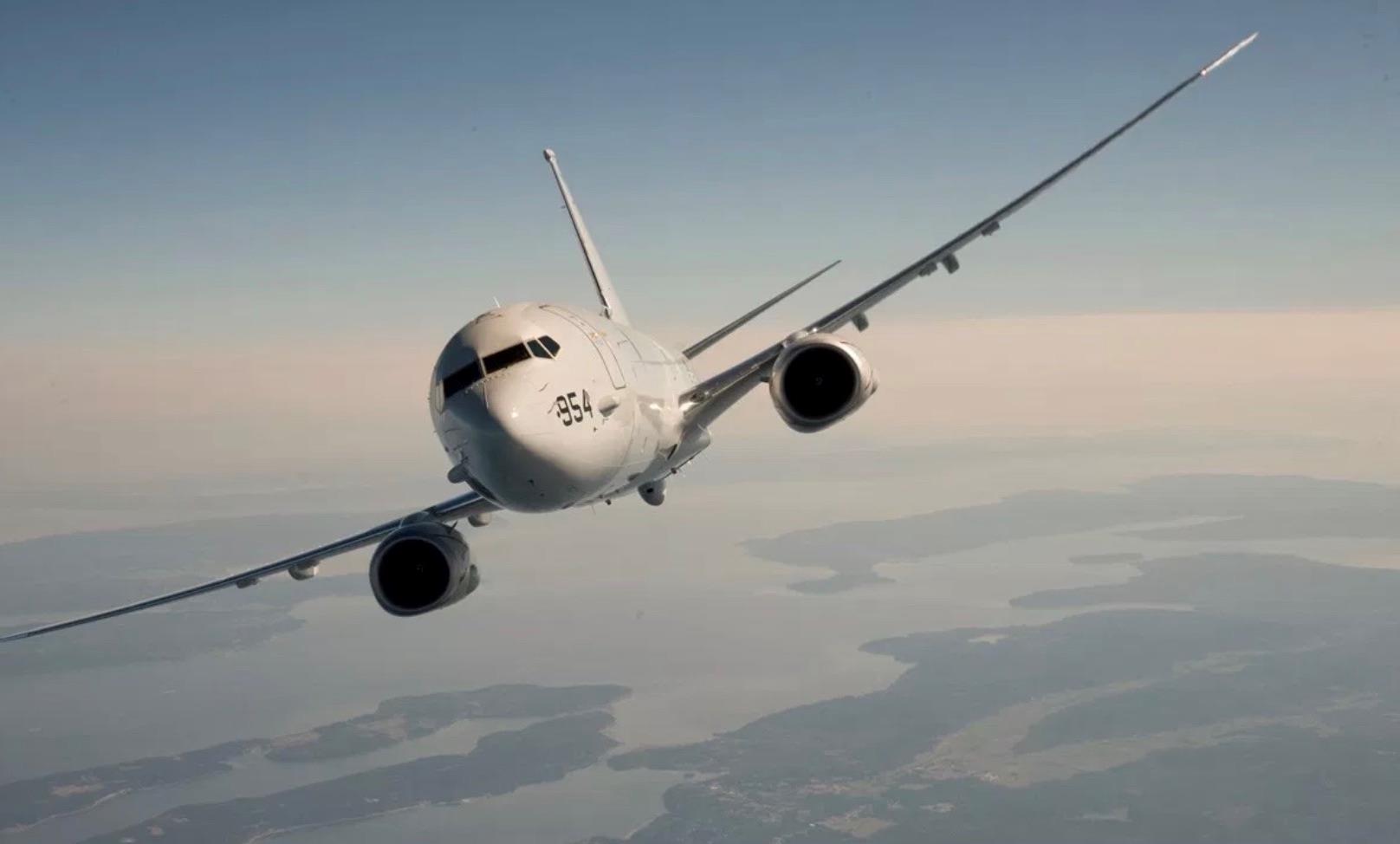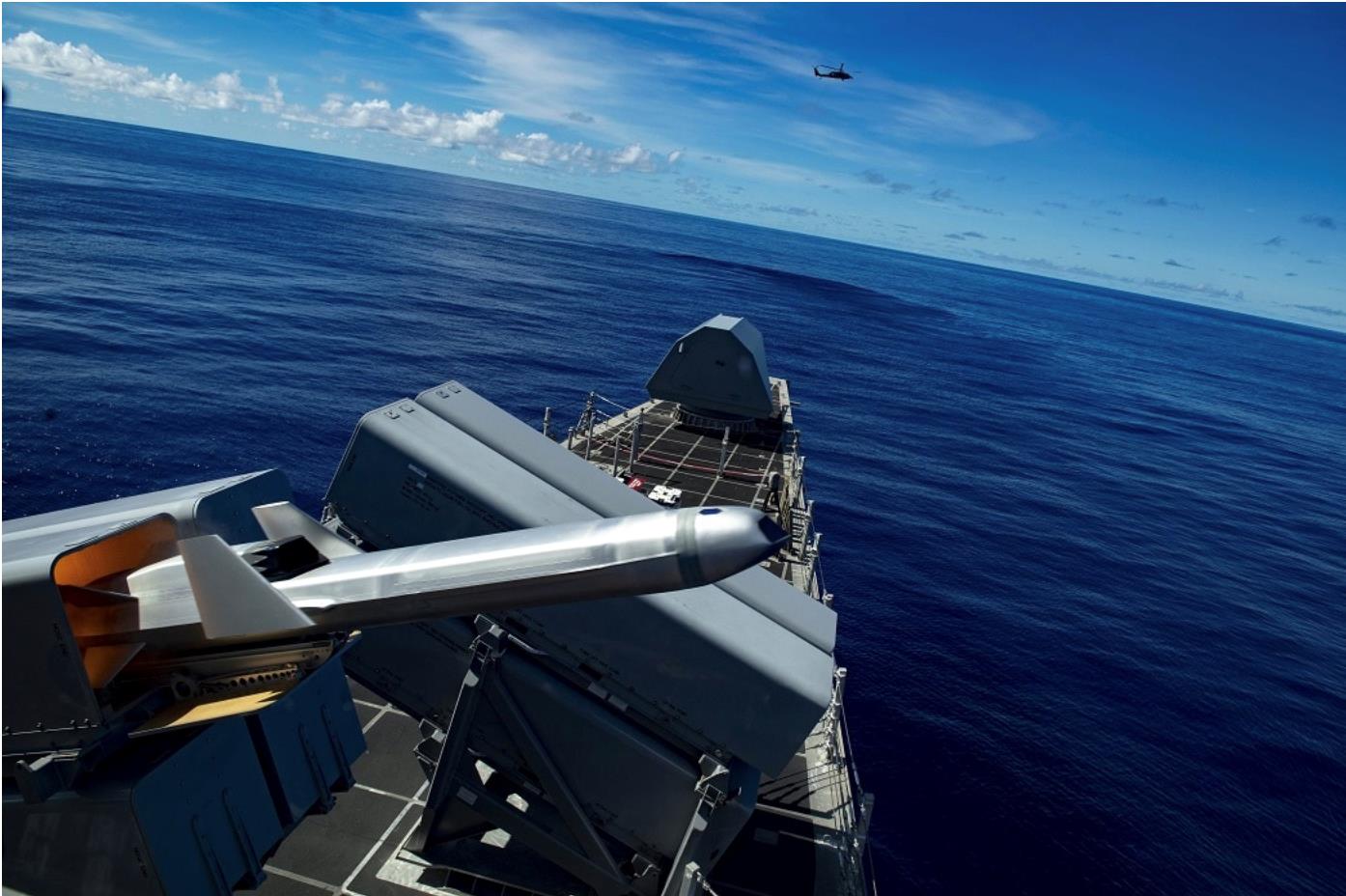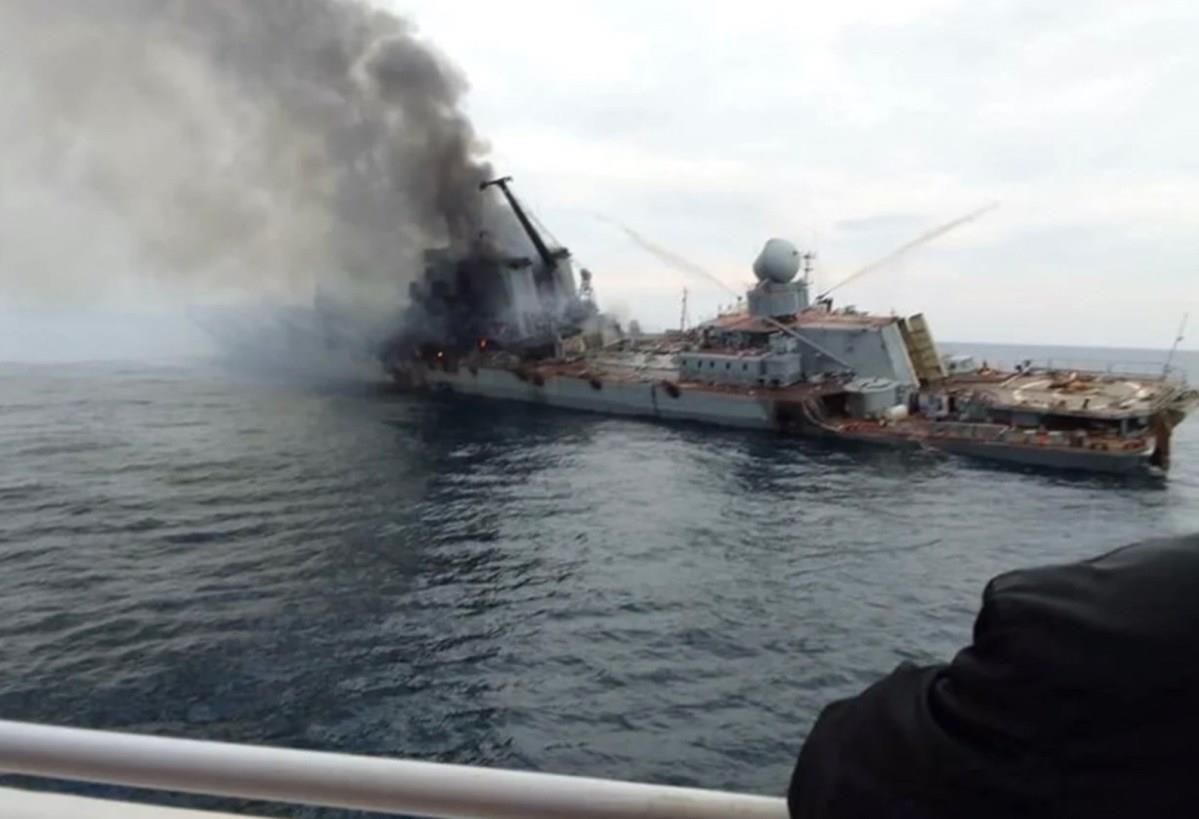
Moskva Was Possibly Sunk By A Norwegian Missile
On April 14, 2022, the Russian guided-missile cruiser Moskva was hit by a missile or missiles, caught fire, was partially evacuated, put under tow and then sunk as fire on the ship raged out of control.
Ukraine claimed it knocked out the Moskva by firing two R-360 Neptune missiles that successfully hit because the cruiser's crew of around 500 sailors and officers was“distracted” into following one or more Bayraktar drones when the strike was launched.
The loss of the ship is regarded by some as evidence of a “chain of Russian negligence .”
The Moskva was a modern warship that was actually built in the Ukrainian city of Nikolayev in 1979. The Slava class cruiser served in the USSR Navy until 1990 and was out of service for a decade. Its systems were updated and the ship was brought back into service in 2000 as the flagship of Russia's Black Sea fleet.
It had a number of high-resolution radars and advanced air and missile defense systems including the S-300F (SA-N-6), a long-range air and missile defense system, and the OSA (SA-N-4) , a short-range air defense system.
It also had multiple rapid-fire guns as weapons of last resort. There is no evidence that the Moskva launched any missiles or fired any weapons when it was attacked.
On April 14, Moskva was operating around 50 miles (85 kilometers) from Sevastopol, which was its home port. The weather was poor and the sea was choppy on what would be the ship's last day afloat.
Around the time of the sinking, a US P-8 Poseidon was loitering overhead while operating out of Sigonella, Sicily, Italy. The Sigonella Naval Air station is operated by the Italian Navy, but it is also a major US naval hub and plays an important role in the eastern Mediterranean region.
Several different US surveillance and special warfare aircraft operate out of Sigonella. The P-8 had left Sigonella with its transponder on so it was trackable on Flight Radar 24 , a global flight tracking service.
However, at some point over Romania and the Black Sea area, the P-8 shut down its transponder and the whereabouts of the aircraft was unknown to the public for about three hours. It has been reported that the P-8 mission was to track the Moskva.

The P-8 Poseidon in flight in a file photo. Photo: Wikimedia
Most experts agree that the systems on the Moskva were capable of tracking and intercepting the Ukrainian Neptune missiles. The R-360 Neptune is a knock-off of the Russian Kh-35 Uran anti-ship cruise missile and Ukraine has apparently extended the missile's range and improved its electronics.
The system has an operating range of 190 miles (300 kilometers) and is also designed to be launched inland by as much as 25 miles (40 kilometers), making it easier to hide the launching sites.
The Kh-35 was updated in 2015 and has the same range as the Neptune. Both are powered by turbofan engines and are capable of reaching Mach-1 (761 miles per hour or 1,225 kilometers per hour) speeds.
Both Neptune and Kh-35 use active radar homing in the missile to detect and kill their targets. Active radar homing has the weakness that a sophisticated ship such as the Moskva could jam the missile's radar and destroy it by using its active radar as a beacon for air defense missiles.
In the known circumstances, the Moskva was perfectly capable of detecting the Neptune missile and countering it. Because the weather that day was poor, if the Bayraktar drones were used as spotters to locate the Moskva it is unlikely they would have been successful.
The Turkish-made Bayraktar drones have good electro-optical equipment, including electro-optical IR sensors made by Wescam in Canada, a division of the US defense firm L-3. Still, the Bayraktar would have needed to be fairly close to the Moskva to produce adequate imagery and location information.
In any case, there is no evidence that Bayraktars in use in Ukraine are integrated with other systems. For example, in the Nagorno-Karabakh war, it appears the Bayraktars used by Kazakhstan may have been integrated with sophisticated Israeli drones to improve target identification and location.
Because Bayraktars were introduced after the war in Ukraine began, even if there was a Ukrainian desire to integrate the drone with its anti-air defense systems there was likely not enough time to do so.

Turkey's military drone, the Bayraktar TB2, has a proven track record in Syria, Nagorno-Karabakh and now Ukraine. Photo: AFP / Muhammed Enes Yildirim / Anadolu Agency
The Russians have never reported the presence of Bayraktar drones and, if they were far off, they would have played no role in locating and ultimately sinking the Moskva.
Ukraine could have tracked the Moskva's radars from land as an alternative, but it is likely the Moskva's radars were operating in passive mode making radar interception impossible.
The P-8, on the other hand, could have detected and followed the Moskva, and had the ability to provide highly precise information. The US Pentagon says it did not give Ukraine information on Moskva's location.
However, it is clear the Pentagon was closely following the Moskva and other naval combatants operating in the Black Sea.
Even if the Pentagon actually passed on the targeting information, it would not have made that public and certainly would be expected to deny doing so to avoid a physical confrontation with Moscow.
As the Neptune missile could have been tracked by the Moskva, it is possible that a different anti-ship missile that could evade detection was fired at and hit the warship.
It's a line of speculation now being bandied about in the Russian press. The prime suspect is a very advanced, fifth-generation missile developed by the Norwegian firm Kongsberg called the Naval Strike Missile (NSM), Norway's successor to the highly successful Penguin anti-ship missile.
It can be operated on relatively small naval combatants or from shore. Rather than calling it the Naval Strike Missile, the Russians refer to it as the“Norwegian Stealth Missile.” In this connection, they are right for a number of reasons .
The NSM is designed to be very hard to detect and intercept. Physically, it is made from composites instead of metal, giving the 12-foot-long (3.66 meters) missile a very small radar cross-section.
The missile also flies close to the sea's surface, or sea simmer, where ship's radars have trouble discriminating objects because of radar clutter. The missile does not use an active radar but rather employs high-resolution passive infrared as its main sensor.
It is programmed beforehand to know what its desired target“looks like” to the onboard sensors, so once it has coordinates it can find the target on its own, if necessary. Finally, the missile can carry out certain evasive maneuvers during the terminal phase of its flight, making it hard for an adversary to track and kill.

A US littoral combat ship prepares to launch a Naval Strike Missile (NSM) during a naval exercise in a file photo. Image: US Navy
The NSM is boost-launched by a rocket and then uses a turbine engine, much like the Neptune and Kh-35. If the NSM was used against the Moskva, it is likely it would not have been detected, at least not soon enough for any reaction.
The NSM has been bought by the US and is on some of its Littoral Combat Ships. It also has been delivered to some European customers, most notably Poland.
The NSM thus may have been installed in Ukraine, with Norway, the US and Poland potentially providing the system to Kiev. Moreover, in 2020, Ukraine announced it was buying eight Vita boats from the UK (Barzan type), some of which would have likely come with NSM missiles.
The possibility that NSMs were in Ukrainian hands and used from Ukrainian territory is of course still only speculation. The Russians have been looking for NSM launchers in and around Odessa but none have reportedly been found.
And while the true firepower behind the Moskva's sinking is still unknown, its demise may broadly signal a new type of anti-ship warfare that may extend beyond the Ukrainian war.
Follow Stephen Bryen on Twitter at @stevebryen

Legal Disclaimer:
MENAFN provides the
information “as is” without warranty of any kind. We do not accept
any responsibility or liability for the accuracy, content, images,
videos, licenses, completeness, legality, or reliability of the information
contained in this article. If you have any complaints or copyright
issues related to this article, kindly contact the provider above.


















Comments
No comment